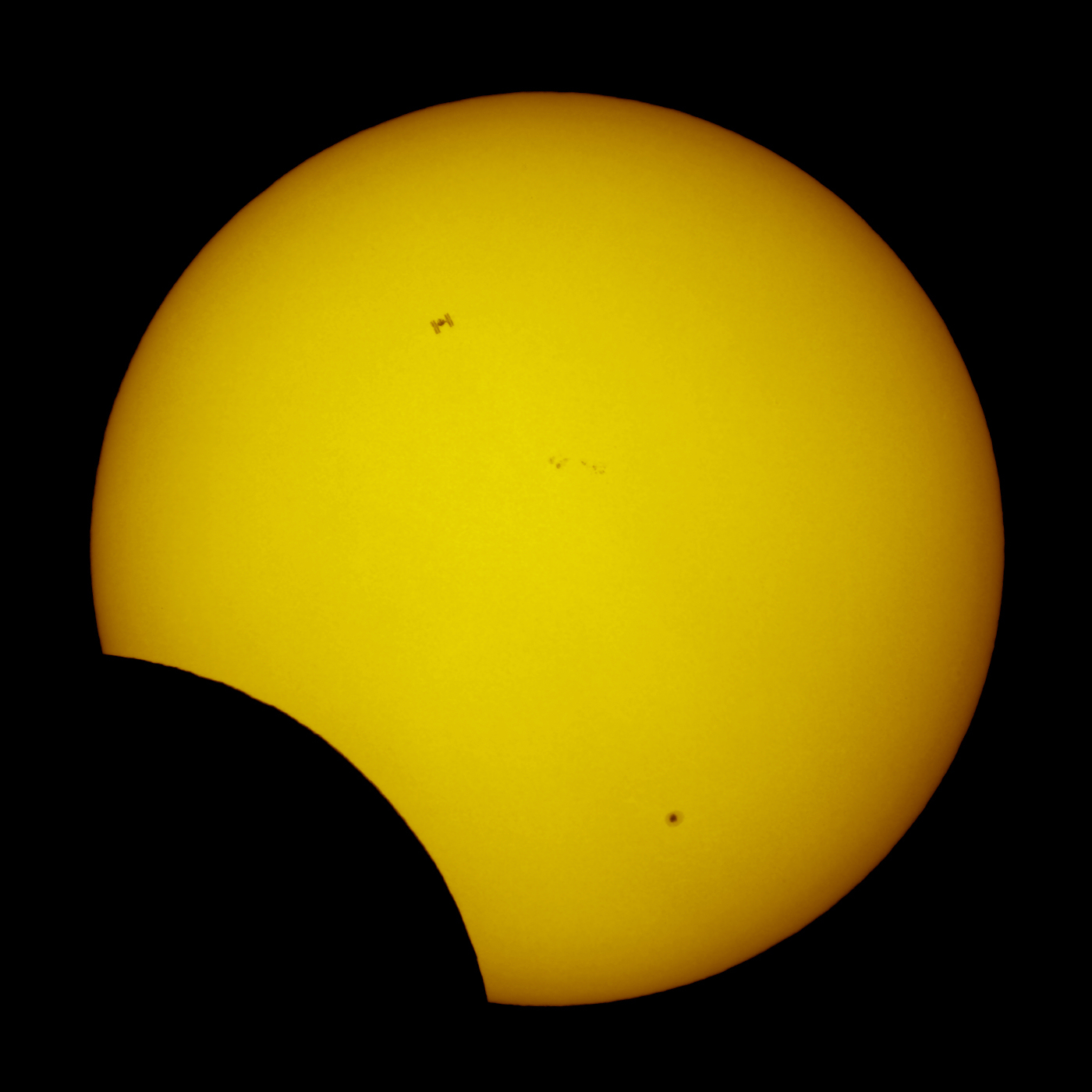



A few years ago I joined a charity that was looking to preserve (even save in some ways) a mound of gravel at the top end of Mold High Street, Flintshire. At the time the site was referred to as once hosting a Norman castle from around 1080.
But it has been many other things
It has been said that some of the support people have for local parks lies not in how 'good' they are, but for what memories they lay down in them. Visiting a local park evokes historical and personal past lives. There follows a minor memory to add to Bailey Hill's timeline

The International Space Station circles the world approximately 16 times a day, passing by at an approximate height of 250miles, whilst travelling forwards at 17,000 mph, which is about five miles every second! That is about five minutes from North Wales to Moscow in a straight line. It's orbit covers over 90% of the world's population, and the crew take lots of photos some of which are linked to here.
On board are several amateur radio experiments capable of transmitting voice, and digital signals. On some weekends, when the crew have off-duty time, the station crew sometimes send Slow Scan TV images- which are photographs transmitted over a couple of minutes, line by line, and decoded on the ground on computers and lately, mobile phones.. However, mainly it operates under APRS, perhaps because this is a data mode that does not require close supervision by the crew. Currently, it is running as an APRS 'digipeater' on the '2 metre' amateur band.
It's possible, using compact amateur radio transmitters and hand held antennas with as little as 5 watts of power (or a twentieth of the power required to light a 100watt bulb ) to send signals to the ISS, which the ISS receives, stores and then re-transmits to anyone else in the station's 'footprint' - the circle of earth that is visible from the ISS.
The space station crew sometimes arrange for schools to call them and ask questions which are answered over the radio for them to hear. A simple receive set up will allow these broadcasts to be received.



The following was received 600 metres from Bailey Hill as the space station flew over Mold. The children were asking their questions from I.E.S. Pedro de Valdivia in Villanueva de la Serena, Spain and the ISS commander Chris Cassidy ISS Commander Chris Cassidy (KF5KDR) can be heard replying.
For teachers: This is the complete (both sides) official YouTube recording of the contact.
The Norman motte and bailey castle built upon a glacial deposit at the top end of Mold High Street, Flintshire has at various times had multiple roles including the housing of military families in wartime and as a base for a popular bowling team.
The Bailey Hill research group is working to discover more of the hill's background, and today, 4th of June 2020 turns out to be a bit of an anniversary. Click on the image below for details.
Click HERE if the above image does not display in your browser
The Bailey Hill castle site is registered as a castle for the World Castle Awards (ref gw-00132) for radio amateurs to 'collect' - and can be activated by operating a station within 1km of the site.
The contact has to be direct to count, but connections by satellite can be of interest. On 4th June 2020 I sent a packet referring to the castle from just 600 meters from it. The ISS received and repeated it and this rebroadcast was received in the Outer Hebrides by amateur station GM7VEC.


The map shows that all the stations in the footprint of the same satellite can have a go at getting signals up to it. Obviously there is some competition, but the APRS mode used is designed to operate efficiently on a single frequency by introducing a random element to when transmissions occur- giving as many stations as possible a fair share of the channel.

A group of enthusiastic 'Moldovians' sat in a room in 1870, and they had the vision to provide a space for this region for fetes, tennis, competitive bowls and fresh air at no charge. The industrial revolution was poisoning the environment for many town dwellers, and the parks appeared as an attempted remedy.
I wonder if they imagined just how far their efforts would reach?
here's to the next 150 years.